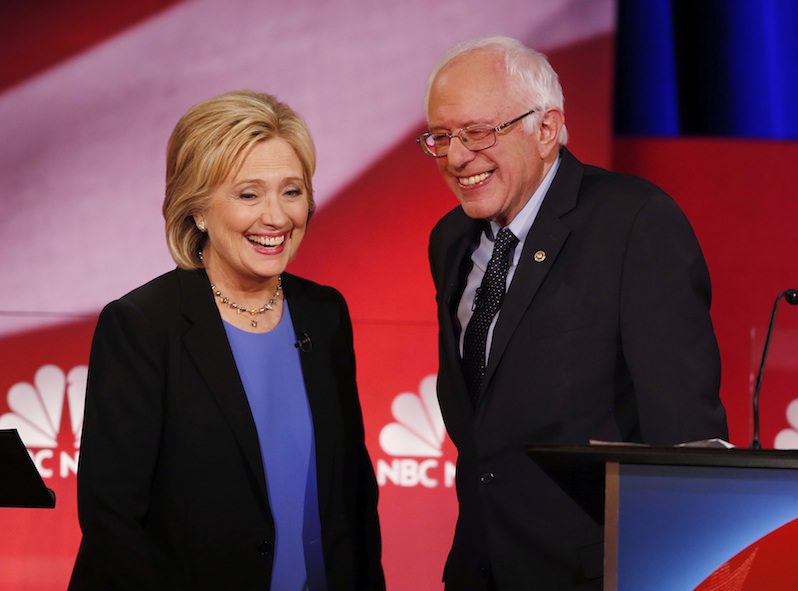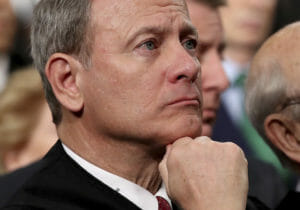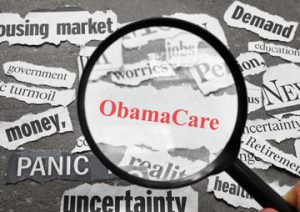Finding a Cure for Bernie Sanders’ and Hillary Clinton’s Health Care Plans
Physicians and Green Party activist/politicians Jill Stein and Margaret Flowers say the two leading Democratic presidential candidates have something in common: covering up the failures of the Affordable Care Act. Hillary Clinton and Bernie Sanders during a break in the Democratic presidential debate Sunday. (Mic Smith / AP)
Hillary Clinton and Bernie Sanders during a break in the Democratic presidential debate Sunday. (Mic Smith / AP)
By Margaret Flowers and Jill Stein
Hillary Clinton’s recent attack on Sen. Bernie Sanders for his advocacy of single-payer health plan has brought the health care crisis into the spotlight.
We are both physicians who have a long history of working on health policy. While the two Democratic candidates offer proposals that are very different from each other, we see that neither is calling out health care privatization as the fatal flaw in the Affordable Care Act (ACA).
Clinton argues we can simply expand the Affordable Care Act to achieve universal coverage, which we view as impossible. Sanders is on target with his new Medicare-for-all proposal. However, by preserving the illusion that the ACA is a “step in the right direction,” Sanders misses the point that the current U.S. health care system under the ACA is unique among industrialized nations because it treats health care as a commodity rather than a public good.
Health care should be a central issue in the presidential campaigns. A Reuters/IPSOS poll in December showed that the cost of health care is a bipartisan concern, with 62 percent of Republicans and 67 percent of Democrats surveyed saying they would want to know about a presidential candidate’s plan for reducing health care costs. This is not surprising, since the ACA has produced high premiums and unaffordable out-of-pocket costs. The status quo is not working.
We have both been clear about our long-term support for a national improved Medicare-for-all health system based on a strong public health foundation and human rights principles. We offer a critique of the current health care debate and our prescription for the solution to the crisis.
Clinton’s Attack on Sanders, and Her Plan
Clinton attacked Sanders on the health legislation he has introduced in Congress nine times. There are reasons to criticize his bill, but they are not the disingenuous reasons Clinton uses.
The claim that she, her daughter and her campaign made, that Sanders would do away with Medicaid, Medicare, the Veterans Administration, the Children’s Health Insurance Plan and the Affordable Care Act, while technically true, didn’t tell the full story. In truth, all these programs would become part of a national health care plan that would provide comprehensive benefits while saving money and allowing free choice of doctors, hospitals and health services. This would be an improved and expanded Medicare-for-all.
Clinton took this half-truth/half-lie approach because she knows better than to openly criticize single-payer, which is popular in the U.S. In December, a Kaiser Family Foundation poll found nearly 58 percent of all people in the U.S. favor the idea of Medicare-for-all, including 34 percent who say they strongly favor it. The poll also found that 81 percent of Democrats support this single-payer program. These results are deeply held, being consistent with polling before the 2009 debate on the ACA. Clinton avoided using the terms “single payer” or “Medicare-for-all” because Democrats support this approach—by a landslide.
The other criticism Clinton made of the Sanders plan was that each state would administer its own plan. This is a valid critique, because there is a wide variation in ideology from state to state. Under the ACA, some governors refused to expand Medicaid, leaving 3 million people without coverage. Without a clear federal standard, states can prevent universal coverage.
Again, however, Clinton did not tell the whole truth. She left out that Sanders’ bill included national oversight. If governors did not meet national standards, the federal government would take over.
The 50-state administration was a serious flaw in the Sanders plan because it allowed each state to decide who was a resident. Some state governments could choose not to include immigrants. From a public health perspective, this is a shortsighted position, because we are all healthier when everyone has access to the care they need.
This was one of several flaws in Sanders’ legislative proposals. He also refused to eliminate for-profit health facilities, which have higher costs and worse outcomes in general. And Sanders refused to introduce a Senate companion bill to HR 676, The Expanded and Improved Medicare for All Act. That legislation, sponsored in the House by Rep. John Conyers, D-Mich., is the gold standard for single-payer.
Some in the media have mistakenly described Clinton’s health program from the ’90s as a single-payer program. It was not single-payer, but rather a program that empowered the biggest insurance companies by essentially creating a few private insurance monopolies. It forced people to buy insurance or face very high penalties. Clinton’s plan was described in Progressive Review as creating “a medical oligopoly that would dispense health-care under the rules of the Fortune 500 rather than according to those of Hippocrates.”
The Clinton plan included maximum fines: $5,000 for refusing to join the government-mandated health plan; $5,000 for failing to pay premiums on time; 15 years in jail for doctors who received “anything of value” in exchange for helping patients short-circuit the bureaucracy; $10,000 a day for faulty physician paperwork; $50,000 for unauthorized patient treatment; and $100,000 a day for drug companies that messed up federal filings. Her plan was friendlier to Wall Street than the ACA and less friendly to patients.
Sanders’ New Plan
On Sunday, just two hours before the final Democratic debate before the Iowa caucus, Sanders released a new plan. It made two excellent improvements on his previous legislative proposals.
First, he writes that he would create “a federally administered single-payer health care program.” This is a major improvement over the complexity, cost and inconsistency of having 50 state administrators—it will save money and provide equal coverage for all. Second, he expanded the coverage of his plan so that all medically necessary services would be covered.Most of his announcement Sunday focused on how the plan would be paid for. His plan includes a 2.2 percent tax, which he calls a premium, on certain households. For example, Sanders’ website states that this would apply to a family of four with income over $28,800. There would also be a 6.2 percent payroll tax. Then it provides for a progressive income tax, beginning with those making over $250,000 annually. Capital gains and dividends would be taxed at the same rate as other income, tax deductions for the wealthy would be limited and the estate tax would be changed.
While this plan gives his opponents a talking point—“Sanders would raise taxes on the middle class”—the reality is that it would actually save people money because families would no longer be paying premiums. In addition, the payroll tax would lower costs for businesses.
Sanders’ website provides limited details, but this new plan appears to be closer to the “gold standard” HR 676, which ends private insurance, controls drug prices and ends for-profit hospitals. HR 676 also provides broad coverage so that people will have all of their medical needs met. The funding for HR 676 would come from a variety of taxes, mainly on the wealthy, which would replace premiums, deductibles and co-pays. Patients would be able to receive care without worrying whether they could afford it, and health professionals could prescribe treatment without the hassle of fighting with private insurance administrators for authorization.
The ACA and the Path Forward
The conflict between Clinton and Sanders evolved at the final pre-Iowa caucus debate. Interestingly, both supported the ACA, which we see as a critical mistake. Clinton wants to build on the ACA to move toward universal health care, an impossible task. Sanders also claims he is seeking to “build on the success of the ACA,” while in reality his plan would replace the ACA with single-payer.
This falsehood is where the debate gets off track and misleads the public. Both candidates are playing politics with the issue. According to the CBS poll this month, while only 40 percent of the public supports the ACA, 69 percent of Democrats support it.
We believe support for the ACA would drop if people realized the truth about the new law. People are already realizing that the ACA did not solve the problem of too-expensive-to-use health insurance because of high out-of-pocket costs and skimpy coverage. Health care premiums and out-of-pocket expenses are costing some patients 20 percent or more of their income.
President Obama and Hillary Clinton tout lower spending on health care in the U.S., but they don’t explain that it is because people cannot afford the health care they need. Because they cannot afford the out-of-pocket costs, patients delay or avoid going to the doctor. So, while premiums for insurance go up and the insurance industry prospers, people in the U.S. either go without health care or go into debt. A recent survey found that more than 60 percent of people with medical debt have insurance. This should be considered a failure, not a success.
Other shortcomings are becoming evident. The ACA failed to cut the high overhead and administrative costs of the hundreds of insurance companies. The Health Affairs Blog reports that between 2014 and 2022, the ACA will add nearly $274 billion in extra administrative costs to our already wasteful health system.
Administrative hassles not only burden patients trying to navigate the system, they are increasingly affecting health professionals. A recent study found that more than half of doctors are experiencing burnout, which makes them less able to care for their patients. This has increased since the ACA went into effect.
In reality, the choice between the ACA and improved Medicare-for-all is a stark one. The ACA relies on the insurance industry as the backbone of health care, while single-payer does away with the insurance industry; the ACA treats health care as a commodity while single-payer treats it as a public good; the ACA allows for a tiered health system where you get what you can pay for, while single-payer would treat health care as a human right.
The two approaches cannot exist in the same system, because if the insurance industry continues to play a role, it will undermine any publicly funded system. The insurance industry is adept at attracting the healthiest people and leaving those who need health services to public systems or else uninsured. The industry is an impediment to health. It must be ended, not reformed.
To achieve improved Medicare-for-all will require strong leadership, someone who is willing to tell the truth and not bow to industry pressure. People often believe that single-payer is not politically realistic. As physicians, we understand the difference between political reality, which is malleable, and the reality that many are suffering in the U.S. and dying of preventable causes.
In recent years, we have participated in movements that proved that when people work together, we can create change. People power forced the Federal Communications Commission to protect net neutrality. A movement of movements slowed Congress from passing fast track authority and pushed the Trans-Pacific Partnership into an election year. We see strong movements rising across the country to end the fossil fuel era and bring racial justice.
There is supermajority public support for improved Medicare-for-all. There is a strong and vibrant movement for single-payer hungering for leadership in the White House and Congress. For both of us, creating the solution to the health care crisis is a high priority. Let’s end this failed U.S. experiment in market-based health care. It is time to stand together and make health care a human right.
Margaret Flowers, M.D., is a Maryland pediatrician seeking the Green Party nomination for the U.S. Senate. She is co-director of PopularResistance.org and a board adviser to Physicians for a National Health Program and is on the leadership council of the Maryland Health Care Is a Human Right campaign.
Jill Stein, M.D., is a Massachusetts internist seeking the Green Party nomination for the presidency. She was the 2012 presidential nominee of the Green Party. She is an internationally known public health advocate and a former co-chair of her state’s Green Party.
Your support matters…Independent journalism is under threat and overshadowed by heavily funded mainstream media.
You can help level the playing field. Become a member.
Your tax-deductible contribution keeps us digging beneath the headlines to give you thought-provoking, investigative reporting and analysis that unearths what's really happening- without compromise.
Give today to support our courageous, independent journalists.








You need to be a supporter to comment.
There are currently no responses to this article.
Be the first to respond.